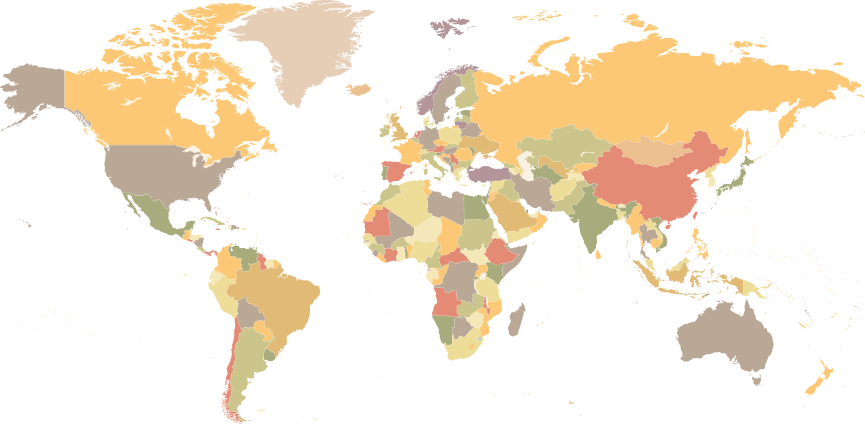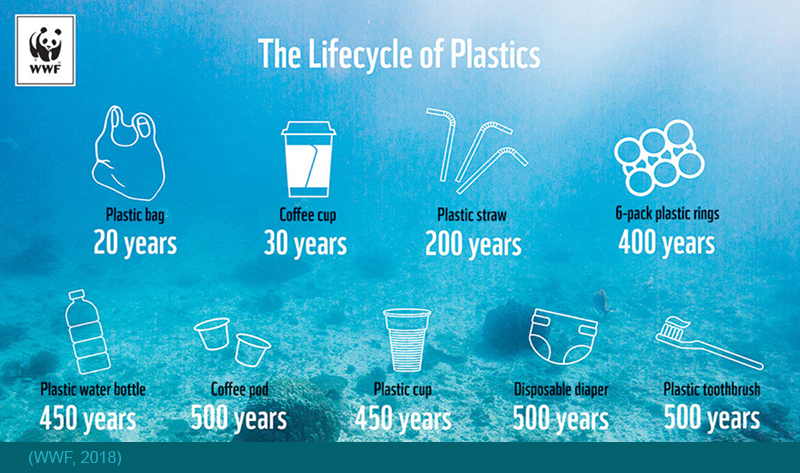1. As an Infant
 BIRTH
BIRTH
Plastic bags begin as crude oil that is heated to produce ethylene gas and is then converted to polyethylene. The polyethylene is cut and then stretched like a string and into the shape of a plastic bag.
2. Toddler Years
 LIFE SPAN
LIFE SPAN
Whether used to carry groceries or lunch, most plastic bags are used only one time for an average of 20 minutes before being thrown away or recycled.
3. Childhood
 INTERMISSION
INTERMISSION
Plastic bags take 85 times more energy to recycle than to create. More than 98% of plastic bags are discarded rather than recycled.
4. Adulthood
 THE NEXT, 1000 YEARS
THE NEXT, 1000 YEARS
Discarded plastic bags end up in landfills or the ocean. Scientists estimate that it can take up to 1,000 years for a plastic bag to disintegrate completely, releasing toxins as it decays.
(Greener Ideal Staff, 2017)
Plastic Bags Around the World
• Italy and Belgium have taxes on plastic bags.
• Germany, Holland, Spain, and Norway charge shoppers for plastic bags.
• Ireland charges shoppers for plastic bags and use has dropped by 90%.
• Australia assesses fines up to $5,000 for stores that do not comply with the ban on bags.
• San Francisco was the first city in the United States to put a ban on plastic bags in March, 2007.

(Greener Ideal Staff, 2017)

What are Microplastics?
• Microplastics are very small fragments of plastic material.
• Microplastics on the beach—the abundant sunlight and high temperatures found on the beach degrade plastic faster. On the hot sand, plastic trash becomes brittle, cracks, and breaks down, adding to the great garbage patches found in the oceans.
(Beaudry, 201)
Question 1
On average, plastic bags are used once for usually __________ minutes.
Question 2
More than __________% of plastic bags are discarded rather than recycled.
Question 3
How long does it take for the average plastic bag to disintegrate?
Question 4
How could you help reduce the great garbage patches in the oceans?
Question 5
What makes plastic degrade faster?
References
Beaudry, F. (2019, July 21). What are microplastics? Retrieved from https://www.thoughtco.com/what-are-microplastics-1204133
Greener Ideal Staff. (2017, May 4). The life cycle of a plastic bag [Infographic]. Retrieved from https://greenerideal.com/infographics/life-cycle-of-a-plastic-bag/
WWF. (2018, June 19). The lifecycle of plastics. Retrieved from https://www.wwf.org.au/news/blogs/the-lifecycle-of-plastics#gs.wcd50d